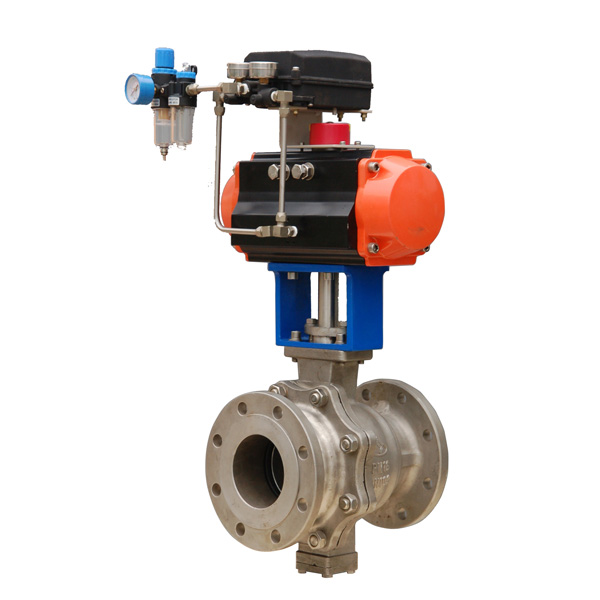Discover the key differences between a ball valve and a flow control valve to make the right choice for your system. While a ball valve excels in quick shut-off and durability, especially when paired with electric actuators like electric ball valves or electric actuated ball valves, a flow control valve is designed for precise fluid regulation. Learn how automation with ball valve electric actuators enhances performance and find the ideal valve for your application.
Introduction
Valves play a critical role in industrial systems, ensuring efficient control and regulation of fluid processes. Among the many valve types, understanding the differences between a ball valve and a flow control valve is essential for optimizing performance and achieving reliable results. A ball valve, known for its quick shut-off capabilities and durability, shines in automation setups, especially when paired with innovations like electric ball valves, electric actuated ball valves, and ball valve electric actuators. On the other hand, a flow control valve excels at precise fluid regulation, essential for systems demanding accuracy. This blog will break down the key distinctions between these valves and explore how technologies like electric ball valve actuators are enhancing their functionality. Whether you’re seeking enhanced control or robust automation, identifying the right valve can transform your operations.
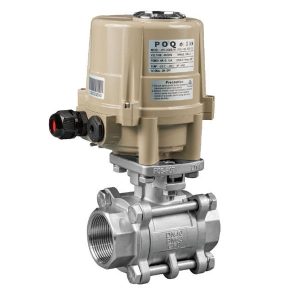
1. What is a Ball Valve?
1.1 Definition and Usage
Explain what a ball valve is and how it works.
A ball valve is a highly versatile and widely used type of quarter-turn valve that controls the flow of liquids, gases, or other media within a pipeline. It features a hollow, perforated ball housed within the valve body, which rotates to allow or block flow. When the ball’s hole aligns with the pipeline, the valve is open, enabling fluid to pass through. With a simple 90-degree turn, the ball is rotated to its closed position, halting flow completely.
Ball valves are valued for their durability, tight sealing, and ease of operation, even in high-pressure or high-temperature environments. The introduction of automation has further enhanced their functionality; options like the electric ball valve and electric actuated ball valve allow for remote operation and greater precision. These automated systems often utilize ball valve electric actuators or electric ball valve actuators, which enable seamless integration into industrial processes where efficiency and control are critical. From chemical processing to water treatment systems, electric ball valves provide unmatched reliability and performance for various applications.
Discuss common applications in industrial, commercial, and residential systems.
Valves are integral to a variety of systems across industrial, commercial, and residential settings, offering reliable control and fluid management. Ball valves, known for their durability and rapid shut-off, are commonly used in industries like oil and gas, water treatment, and chemical processing. Their adaptability extends to automation through solutions like electric actuated ball valves or electric ball valves, which enhance performance in high-demand applications. Flow control valves, on the other hand, excel in tasks requiring precise flow regulation, such as HVAC systems, irrigation setups, and manufacturing processes. With innovations like ball valve electric actuators and electric ball valve actuators, these valves provide unmatched flexibility to meet the specific needs of any environment.
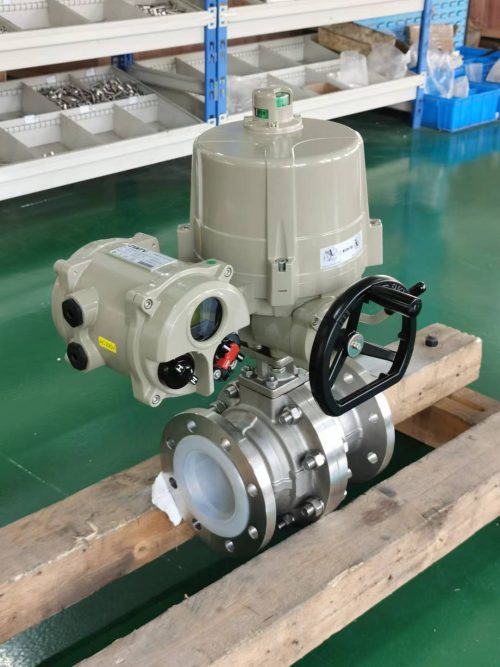
1.2 Key Features
Ball valves and flow control valves each offer distinctive features that make them essential in various applications. A ball valve stands out for its robust construction, tight shut-off capabilities, and ease of use, making it ideal for high-pressure systems and demanding environments. With advancements like electric actuated ball valves and electric ball valve actuators, they deliver automated efficiency and precision. Flow control valves, on the other hand, are designed for accurate flow regulation, ensuring optimal performance in systems where precision is critical. Whether utilizing an electric ball valve or a manual flow control valve, these solutions provide reliability, versatility, and adaptability to meet diverse operational needs.
1.3 Electric Ball Valves and Their Advantages
Explore the role of electric actuated ball valves in automation.
Electric actuated ball valves play a pivotal role in automation, streamlining operations across numerous industries. By integrating an electric ball valve actuator, these systems enable precise, remote control of fluid flow, significantly reducing manual intervention while boosting accuracy and efficiency. The versatility of electric actuated ball valves makes them ideal for high-demand processes, such as in chemical manufacturing, water treatment plants, and HVAC systems. With their ability to offer reliable performance and minimize downtime, they are an essential component in modern automated setups striving for enhanced productivity and operational reliability.
Talk about ball valve electric actuators and how they enhance precision and control.
Ball valve electric actuators are key components in achieving enhanced precision and control within fluid management systems. By automating the operation of electric ball valves, these actuators deliver accurate and consistent flow regulation, eliminating the potential for manual errors. Their seamless functionality allows for remote operation and instantaneous adjustments, making them ideal for applications in industries like oil and gas, water treatment, and manufacturing. Whether integrated into electric actuated ball valves or standalone configurations, these actuators significantly improve operational efficiency, reduce downtime, and ensure reliable performance in demanding environments.

2. What is a Flow Control Valve?
2.1 Definition and Usage
Provide an overview of flow control valves and their purpose in regulating fluid flow.
Ball valve electric actuators are key components in achieving enhanced precision and control within fluid management systems. By automating the operation of electric ball valves, these actuators deliver accurate and consistent flow regulation, eliminating the potential for manual errors. Their seamless functionality allows for remote operation and instantaneous adjustments, making them ideal for applications in industries like oil and gas, water treatment, and manufacturing. Whether integrated into electric actuated ball valves or standalone configurations, these actuators significantly improve operational efficiency, reduce downtime, and ensure reliable performance in demanding environments.
Common applications where accurate flow management is required.
Accurate flow management is essential in numerous applications where precision and consistency are critical. Industries like pharmaceutical manufacturing, chemical processing, and water treatment systems rely heavily on flow control valves and electric actuated ball valves for the precise regulation of liquids and gases. These valves, including advanced electric ball valves with ball valve electric actuators, ensure seamless operation in processes where even minor fluctuations can impact efficiency or product quality. From dosing chemicals to maintaining optimal pressure levels, these components play a pivotal role in upholding operational reliability and achieving exact performance standards.
2.2 Types of Flow Control Valves
Give examples of flow control valve designs, including globe valves and needle valves.
Flow control valve designs come in various forms to suit specific precision flow management needs, with globe valves and needle valves standing out as key examples. Globe valves are known for their robust construction and exceptional throttling capabilities, making them ideal for applications requiring frequent flow adjustments, such as in steam systems or chemical plants. Needle valves, on the other hand, offer unparalleled precision, allowing for fine control over flow rates in low-flow applications, such as instrumentation and gas metering. These designs provide reliability and adaptability across a wide range of industries, ensuring optimal performance in demanding environments.
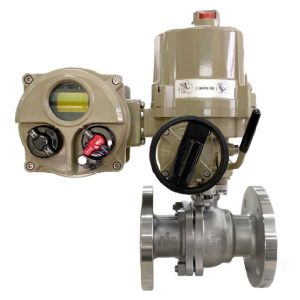
Mention specific scenarios where each type excels.
Globe valves and needle valves excel in distinct scenarios that demand precision flow management. Globe valves are highly effective in systems requiring regular throttling, such as regulating steam flow in power plants or controlling fluid dynamics in chemical processing facilities. Their durability and capability to handle high-pressure applications make them a preferred choice in industrial settings. Needle valves, with their ability to fine-tune flow rates, are indispensable in low-flow environments like laboratory instrumentation, gas metering, and hydraulic systems. These flow control valve designs ensure optimized performance and reliability tailored to specific operational demands.
2.3 How Flow Control Valves Differ from Ball Valves in Automation
Discuss why flow control valves may not always pair with ball valve electric actuators.
Flow control valves may not always pair with ball valve electric actuators due to differences in design and functionality. While ball valve electric actuators optimize rapid on-off operations and are ideal for applications requiring full open or close positions, flow control valves, such as globe or needle valves, are tailored for precise throttling and fine flow adjustments. These flow control valves often demand specialized actuation methods that allow for more nuanced positioning than what is typically achieved with electric ball valve configurations. This distinction ensures that each valve type is used in the scenarios where it performs best, ensuring precision flow management and operational efficiency.
3. Key Differences Between Ball Valves and Flow Control Valves
3.1 Functionality and Purpose
Compare the shut-off function of ball valves with the regulating nature of flow control valves.
Flow control valves may not always pair with ball valve electric actuators due to differences in design and functionality. Ball valve electric actuators optimize rapid on-off operations. They are ideal for applications requiring full open or close positions. Flow control valves, like globe or needle valves, are designed for precise throttling and fine flow adjustments. These valves often require specialized actuation for more nuanced positioning than electric ball valve configurations.
This ensures each valve type performs best in its intended application, achieving precision flow management and operational efficiency.
Discuss performance across different industries.
Flow control valves and ball valve electric actuators demonstrate exceptional performance across diverse industries, adapting seamlessly to their specific operational needs. In pharmaceuticals, their ability to manage precise dosing ensures product consistency and compliance with stringent quality standards. The oil and gas sector benefits from their durability and reliability in high-pressure systems, critical for controlling fluid dynamics in pipelines. Meanwhile, in water treatment, these components provide efficient flow regulation, improving process efficiency and environmental outcomes. By combining advanced design with precision flow management, these solutions deliver unmatched adaptability and value in demanding applications.

3.2 Design and Structure
Highlight the spherical design of ball valves vs. the complex structure of flow control valves.
Ball valves feature a streamlined spherical design that allows for quick and reliable on-off operations, making them ideal for applications requiring minimal flow resistance and zero leakage. In contrast, flow control valves are characterized by a more complex structure designed for precise throttling and fine flow adjustments. This intricate architecture enables them to manage variable flow rates with pinpoint accuracy, optimizing precision flow management in demanding environments. Each design offers unique functional advantages, with ball valves excelling in simplicity and efficiency, while flow control valves provide the versatility needed for intricate flow regulation tasks.
3.3 Automation and Actuation
Compare automation compatibility, focusing on electric ball valve actuators and other actuation systems.
Electric ball valve actuators and other actuation systems differ significantly in automation compatibility, each suited to specific operational demands. Electric ball valve actuators excel in delivering rapid, automatic on/off functions, making them ideal for tasks requiring simple, binary flow control. On the other hand, actuation systems tailored for flow control valves, such as pneumatic or hydraulic actuators, offer superior precision and flexibility. These systems enable nuanced positioning and throttling, essential for applications demanding exact flow regulation. By leveraging the strengths of each approach, operators can optimize automation and achieve precision flow management across diverse industrial settings.
3.4 Maintenance and Durability
Evaluate ease of maintenance and long-term reliability of both valve types.
Ball valves are widely recognized for their straightforward design, offering ease of maintenance and exceptional long-term reliability. Their compact structure has fewer moving parts, reducing wear risks. This simplifies upkeep and suits durability-focused, low-maintenance applications. Flow control valves feature intricate configurations for precise regulation. They may need frequent inspections and specialized maintenance for optimal performance. Despite this, their robust construction withstands demanding conditions. They are reliable in applications requiring precision flow control. Each valve type offers distinct benefits, ensuring longevity and functionality tailored to specific operational needs.
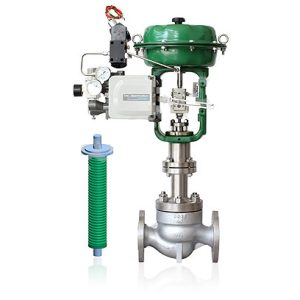
4. When to Choose a Ball Valve vs. a Flow Control Valve
4.1 Application-Specific Scenarios
Identify situations where ball valves, including electric ball valves, are the optimal choice.
Ball valves, including electric ball valves, are the ideal choice for applications requiring rapid, reliable on/off control and minimal flow resistance. Their robust, compact design enhances durability, making them particularly suited for high-pressure systems and environments where frequent cycling is necessary. Electric ball valves further boost operational efficiency by enabling automated, precise control in systems demanding consistent performance. These characteristics make them a preferred solution in industries like water treatment, chemical processing, and HVAC, where simple, efficient flow control is paramount.
Provide examples where flow control valves excel.
Flow control valves excel in applications requiring precision flow management and adaptability to complex systems. They are indispensable in industries like oil and gas, where they regulate the fine-tuned flow of liquids and gases under varying pressures. Similarly, in power generation, these valves maintain critical steam and water flows to ensure operational stability and efficiency. Their ability to handle intricate throttling tasks makes them the ideal choice for chemical processing, where exact control of reaction rates and material flows is vital. These capabilities underscore their importance in managing critical and demanding systems with unmatched precision.
4.2 Cost and Operational Considerations
Ball valves and flow control valves differ significantly when it comes to cost and operational considerations. Ball valves, with their straightforward design and minimal maintenance needs, often offer greater cost-efficiency for systems focused on simple on/off control. Their lower initial investment and reduced upkeep make them a preferred choice for budget-conscious applications. Flow control valves often require higher upfront costs due to intricate configurations. They also need more frequent maintenance. However, they deliver exceptional performance in precision flow regulation. These valves are perfect for applications requiring long-term system accuracy and adaptability. Their investment is justified in demanding, highly specialized environments.
4.3 Compatibility with Electric Actuators
Ball valves and flow control valves demonstrate differing levels of compatibility with electric actuators, driven by their design and application focus. Ball valves, with their simple, rotary motion, seamlessly integrate with electric actuators, providing efficient automation for on/off operations and flow management. This setup ensures reduced installation complexity and reliable performance, especially in systems prioritizing operational efficiency.
By contrast, flow control valves often have intricate mechanisms. They may require specialized actuators for precise positioning and throttling. This can increase integration efforts. However, it provides superior automation for applications demanding meticulous flow regulation. These features make them a great fit for high-precision industries.
5. Latest Innovations in Ball Valves and Flow Control Valves
Recent innovations in ball valves highlight advancements in materials. Flow control valves show progress in smart technology integration. Enhanced performance capabilities are also noteworthy in these innovations.
Modern ball valves now utilize corrosion-resistant alloys and coatings, extending their durability in extreme environments. Meanwhile, flow control valves have embraced smart technology, incorporating sensors and automated feedback systems for precise flow adjustments in real time. These developments not only improve operational efficiency but also enable predictive maintenance, reducing downtime and overall lifecycle costs. Such cutting-edge advancements position these valves as critical components in industries demanding reliability and intelligent system integration.
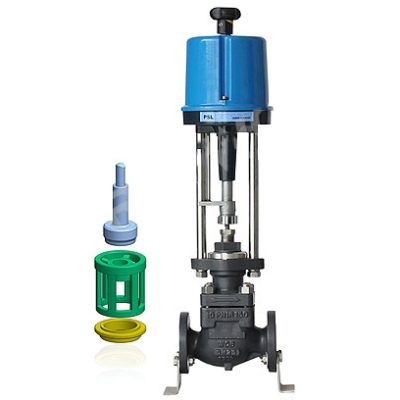
6. FAQS
?What are the functional differences between a ball valve and a flow control valve?
A ball valve is primarily designed for on/off control, providing quick, efficient shutoff with minimal pressure drop. Its simple, rotary mechanism makes it ideal for flow isolation. On the other hand, a flow control valve excels in precision regulation. It enables users to finely adjust specific flow rates. It also maintains those rates within complex systems. Ball valves are optimized for straightforward operations. Flow control valves are better suited for demanding applications requiring high levels of accuracy.
What is the typical delivery time for ball valves and flow control valves?
Delivery times vary depending on the product specifications and order quantity. Standard ball valves are often stocked and can ship within days, while specialized flow control valves with custom configurations may require several weeks for production and delivery. Please check with us for an accurate delivery estimate based on your requirements.
Are there differences in price between these two valve types?
Yes, ball valves are generally more cost-effective due to their simpler design and lower manufacturing complexity. Flow control valves, which feature intricate mechanisms for precise adjustment, tend to have higher upfront costs. However, their precision and adaptability often justify the investment in specialized applications.
What are your standard payment terms?
Our standard payment terms include a 30% advance payment with the balance payable prior to shipment. Alternative options, such as letters of credit, can be arranged depending on the order size and client agreement.
What are the transport terms for shipping these valves?
We offer flexible transport terms, including FOB (Free on Board), CIF (Cost, Insurance, and Freight), or EXW (Ex Works). Customers can select the transport option that best fits their operational and logistical needs.
7. Conclusion
Selecting the right valve for your application is essential for ensuring efficient and reliable operations. While a ball valve is perfect for fast shut-off and durability, especially when automated with electric solutions like electric ball valves and ball valve electric actuators, a flow control valve is ideal for precise fluid regulation in systems that demand accuracy. Understanding the distinctions between these two valve types—including their design, functionality, and compatibility with technologies like electric actuated ball valves and electric ball valve actuators—can significantly impact your system’s performance. When making a decision, consider your specific operational needs, whether it’s automation with electric ball valves or improving fluid flow precision. Always match the valve to the application to optimize performance and maintain cost-efficiency.

